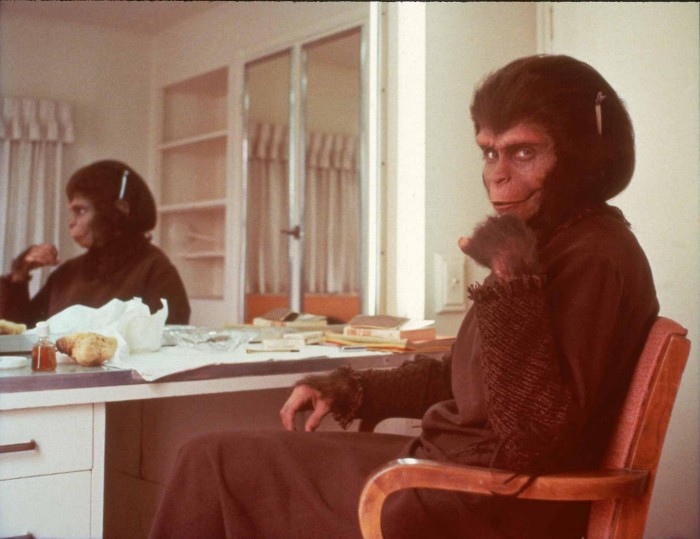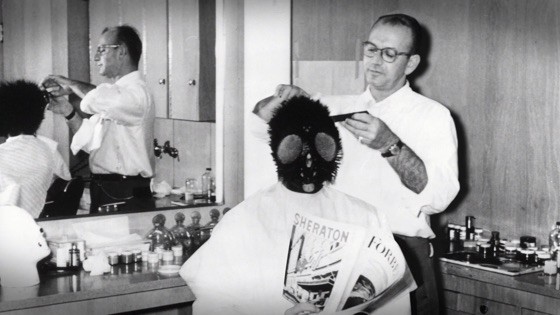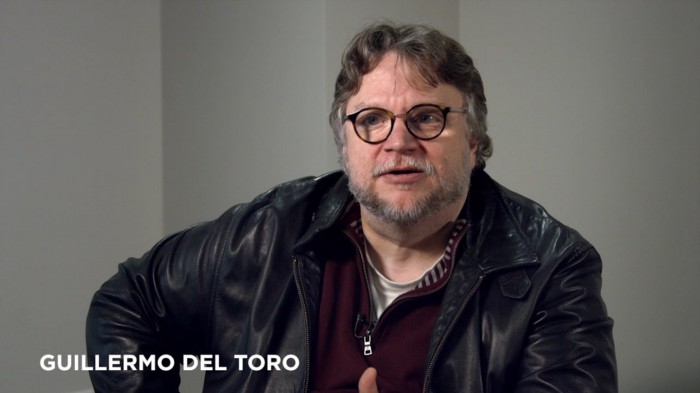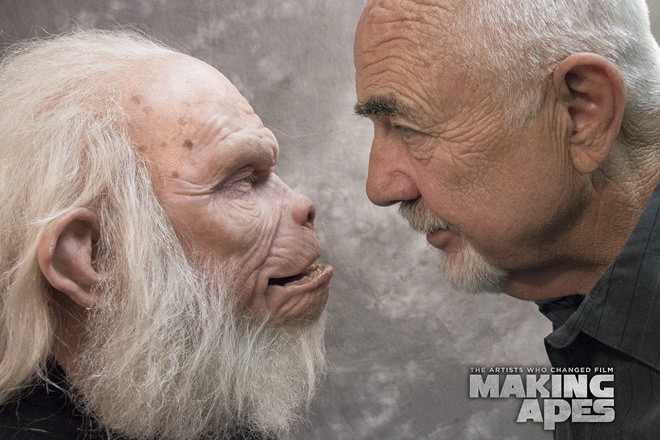If you were to talk about a science fiction movie that changed Hollywood forever, most people would assume you’re talking about Star Wars (1977) — and rightfully so. Star Wars did change everything (and The Empire Strikes Back just celebrated its 40th anniversary). However, there is another science fiction film that also changed Hollywood forever… nine years earlier. That movie was Planet of the Apes (1968).
In today’s movie culture, it’s easy to overlook the groundbreaking brilliance of the original Planet of the Apes, as we’re faced with the equally groundbreaking new trilogy. Rise, Dawn, and War for the Planet of the Apes changed the game with its use of motion capture technology and its photorealistic visual effects. The new trilogy made huge advancements in CG animation, and have their place in cinematic history.
The original Planet of the Apes, however, completely redefined how movies were made and the place special effects makeup has in the industry. Making Apes: The Artists Who Changed Film, a documentary directed by William Conlin, tells the story of the makeup artists who brought Planet of the Apes to life. It made its debut at the Santa Barbara International Film Festival in 2019, but became available to stream on Amazon Prime this year.

Making Apes begins by looking back at the history of makeup effects in Hollywood, which was revolutionized by Jack Pierce, the person behind Frankenstein (1931) and The Wolf Man (1941). However, after World War II, the production of movies changed, and elaborate makeup effects found themselves more prominently in B-movies. As it is put in the film, the quality of makeup effects increased as the quality of the movies they were in decreased.
This made the proposition of Planet of the Apes incredibly interesting. What seemed like yet another B-movie was suddenly propelled to prominence by the casting of Charlton Heston in the leading human role, and Roddy McDowall and Academy Award-winner Kim Hunter as leading apes. The perception completely changed with the talent involved, but what ultimately made the film work was the makeup effects by John Chambers and Thomas Burman. As is explained in the film, they found a way to dress the actors so that they looked believable and authentic, and were still able to emote through their makeup.
Today, it is far more common to have non-human characters in major roles in movies. Characters such as Gollum (Andy Serkis) in The Lord of the Rings or Thanos (Josh Brolin) in Avengers: Infinity War is brought to life by the human performances behind them. This is made possible by the incredible technology that exists today that allows the animation of the characters to be so deeply imbued with the actors’ performances.
However, Planet of the Apes was the film that let everyone in Hollywood know that you can have actors play non-human characters and still portray them with every bit of emotion and depth that they would normally bring to a human character. From that, the floodgates opened for science fiction and fantasy filmmaking.

I appreciate film history, and so I love watching documentaries that look at the influence and positions that movies hold in history. What I love so much about film history is seeing how it evolved, and how one movie influenced all of these people to make their movies, which subsequently inspired a whole new generation of filmmakers to make their movies. The history of film is each film and filmmaker building upon the work of their predecessors.
Making Apes puts into perspective very clearly what Hollywood was like before Planet of the Apes, all the work and troubleshooting that went into creating the makeup effects for the film, and then how Planet of the Apes has defined makeup work within the industry in the 52 years since its debut.
Part of the film features Guillermo del Toro, the Academy Award-winning director behind Pan’s Labyrinth, Hellboy, and The Shape of Water, who uses a lot of practical makeup effects in his films. Del Toro has a considerable sense of film history, and so it is great to hear him talk about the effects from Planet of the Apes and how he views it within the larger historical context.
What is also fascinating about this part of the film is being able to hear about the function of makeup from the perspective of a director. Not every director understands the intricacies of makeup, and so it is really interesting listening to the point-of-view of a director who has utilized special makeup so much in his movies.

Overall, Making Apes: The Artists Who Changed Film is an incredibly informative and captivating documentary for those interested in film history. It sets everything up in a really clear way; outlining the history of makeup effects leading up to Planet of the Apes, and how that movie changed makeup effects going forward. It spotlights people who are often unsung heroes in the filmmaking industry.
When it comes to the celebrated people who work on a movie, most of the time they are the stars, the director, and the producers. The work done by the production designers, the sound editors, the visual effects artists, the costume designers, and the makeup artists blend into the overall experience of the movie. While this is certainly the intention, it can lead to the hardworking people behind all of this not getting the recognition they deserve.
With a documentary such as Making Apes, it gives us as film fans a peek behind the curtain and allows us to fully appreciate the blood, sweat, and tears that go into making the movies we love so much.

Author: Nathanael Molnár, originally published [6/5/2020]

Comments